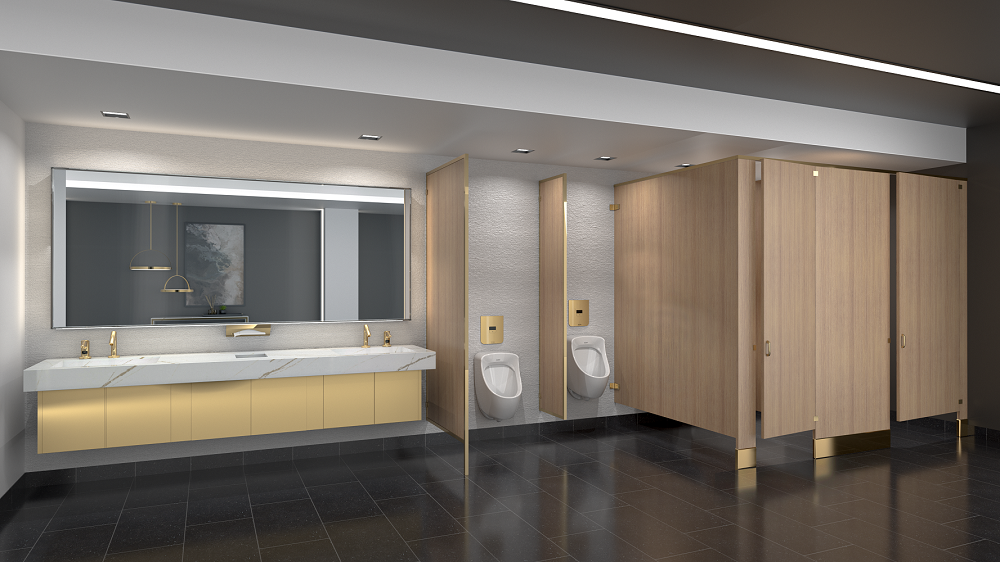Millions of commercial restrooms will be designed and built in 2021. Many of them will look and feel much like restrooms from years past, but some will lead the way with advanced design thinking.
What will inspire architects and designers to create these leading-edge facilities? What principles will emerge as the hallmarks of the first generation of post-COVID-19 restrooms?
After speaking with our partners in the industry and evaluating leading resources, we believe the most significant 2021 commercial restroom designs will:
- Give users a touch-free experience
- Help crowds feel comfortable again
- Welcome users with a more natural feel
Here’s a closer look:
The Beauty of Touch-free Restrooms
From schools to offices and airports, facility managers and restroom users have all taken to heart a simple message about hygiene best practices: When people touch fewer surfaces, they are less likely to transmit disease.
That idea matters throughout every public facility, from desks and doors to elevators and kitchens, but it’s the most tangible in the restroom. In 2021, people simply don’t want to touch anything in a public restroom with their hands—which is why demand for touch-free, sensor-operated faucets, soap dispensers, hand dryers, and flushometers has skyrocketed since the pandemic began.
For an architect or designer, however, touch-free functionality should complement a striking design vision. That’s why Sloan offers the industry’s widest selection of sleek, modern, touch-free sensor faucets and flushometers, including the stunning CX Concealed Sensor Flushometer.
Touch-free restrooms can be beautiful in more ways than one.
Comfortable Distancing for Big Crowds
In our podcast earlier this month, Adam Stover, Senior Principal at global architectural design firm Populous, talks about how people everywhere long to start attending sports events and concerts again. “We’re all craving to get back into that environment. But social distancing is not going away any time soon.”
He recommends three ways architects and designers can create or modify restrooms to help people feel comfortably distanced when the crowds return:
- Partitions between urinals and sinks with colors and textures that make a bold design statement. They can even be removable if the demand for distancing eases.
- One-way traffic flow—with separate entrance and exit portals—that guides people from toilet to sink to hand dryers without backing up. The Sloan AER-DEC® Integrated Sink System can play a significant role in these set-ups.
Biophilic Design for Stress Relief
Millions of people now working at home will, eventually, start returning to their offices. How will they feel once they’re back?
Many experts say workers’ mental health will be as important as their physical health. That may mean that, in addition to taking measures to reduce the spread of disease, leading office facilities will work with their architects and designers to help workers feel more comfortable while they’re at work.
Designing restrooms to emphasize shapes and colors that evoke the great outdoors, while including actual live plants in those designs, can have positive psychological, physiological, and spiritual effects on people. These natural elements in a restroom can add warmth and reduce tension, so workers can feel more relaxed when they return to their offices.
The standout commercial restroom designs of 2021 will combine touch-free technology, crowd-comforting innovation, and stress-relieving design. That’s a tall task—and we look forward to helping architects and designers achieve it!
Sloan technology has contributed to the construction and renovation of many of the world’s most advanced public facilities. Want ideas for making your next project more stylish, more hygienic, and more efficient? Contact Sloan!
Stay Up to Date
Sign up for the Sloan blog to receive information on the latest trends in commercial building, technology advancements and product updates. It's the leading source of industry news for architects, designers, engineers and contractors.
